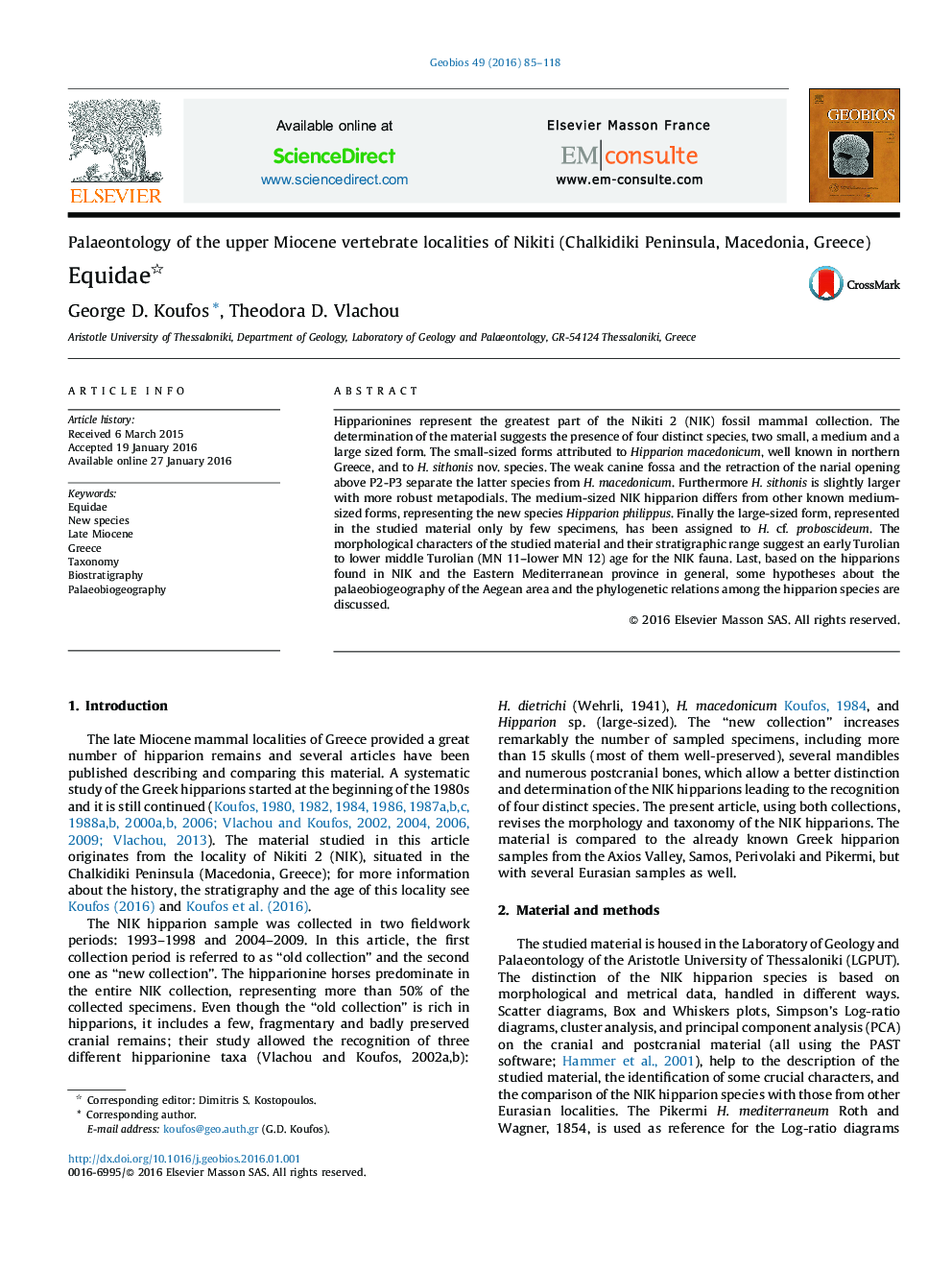| Article ID | Journal | Published Year | Pages | File Type |
|---|---|---|---|---|
| 4747978 | Geobios | 2016 | 34 Pages |
Hipparionines represent the greatest part of the Nikiti 2 (NIK) fossil mammal collection. The determination of the material suggests the presence of four distinct species, two small, a medium and a large sized form. The small-sized forms attributed to Hipparion macedonicum, well known in northern Greece, and to H. sithonis nov. species. The weak canine fossa and the retraction of the narial opening above P2-P3 separate the latter species from H. macedonicum. Furthermore H. sithonis is slightly larger with more robust metapodials. The medium-sized NIK hipparion differs from other known medium-sized forms, representing the new species Hipparion philippus. Finally the large-sized form, represented in the studied material only by few specimens, has been assigned to H. cf. proboscideum. The morphological characters of the studied material and their stratigraphic range suggest an early Turolian to lower middle Turolian (MN 11–lower MN 12) age for the NIK fauna. Last, based on the hipparions found in NIK and the Eastern Mediterranean province in general, some hypotheses about the palaeobiogeography of the Aegean area and the phylogenetic relations among the hipparion species are discussed.
